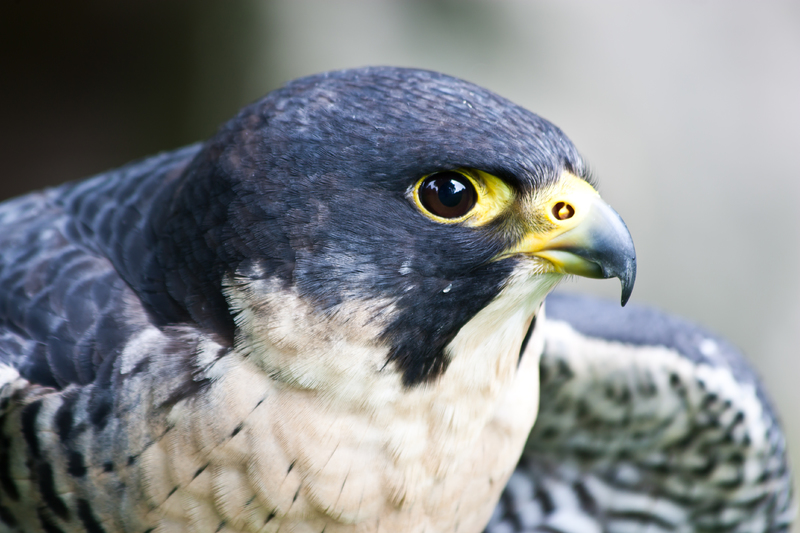Peregrine falcon
 Falcoes are genus of the Falconidae family including about 60 species. They are small to medium sized birds, ranging from 35 g to 1735 g by the gyrfalcon. They are spread all over the world except for the extreme polar regions and some isolated islands. Their plumage color is also very varied, but it is most often in camouflage colors. Their legs are powerful, most often with curved, sharp nails, tailored to capture and keep prey. The beak is sharp and curved down.
Falcoes are genus of the Falconidae family including about 60 species. They are small to medium sized birds, ranging from 35 g to 1735 g by the gyrfalcon. They are spread all over the world except for the extreme polar regions and some isolated islands. Their plumage color is also very varied, but it is most often in camouflage colors. Their legs are powerful, most often with curved, sharp nails, tailored to capture and keep prey. The beak is sharp and curved down.
The peregrine falcon is a large and powerful falcon, with a body length of 38-50 cm and a wingspan of 83-113 cm. In this species there is an age-old and poorly expressed sexual dimorphism. Adults on top are steel gray with black tail, and side-like strips are broad and black. The throat is white, and the chest and abdomen have numerous black strips. The female is larger than the male. When young, the feathers and sideburns are brown, and the tail is creamy. The wings underneath are creamy with large dark-brown spots forming longitudinal strips.
The peregrine falcon is the fastest flying bird. It can develop a speed of more than 350 km/h when diving. It can hunt any birds up to 2 kg. The attack begins when the bird enters its hunting perimeter. Then the falcon dives, sometimes from over a kilometer high. Reaching the victim, it slows down and tries to hit it with nails and stunts. One of their favorite foods is pigeons. They are one of the reasons why many falcons die each year. Most pigeon keepers have taken on an unofficial war against the raptors. Domestic pigeons once left out are often attacked by falcons. The pigeon keepers often tie live birds with feathers on top smeared with fast-acting poison, causing the death of both birds.
In the past, the falcon has also suffered from human action. During the Second World War, the falcons were destroyed consciously so as not to attack the mail pigeons carrying important messages. By the end of the 20th century, the population had declined strongly in some countries due to the use of insecticides. These poisonous substances do not break down but accumulate in the food chain. Being the top of the food chain, the falcon takes a great deal of poison, which seriously damage its breeding process. Thus the species abruptly decreased.
In Bulgaria the peregrine falcon is an endangered species included in the Red Book of the Republic of Bulgaria.
Image: Perseomedusa
